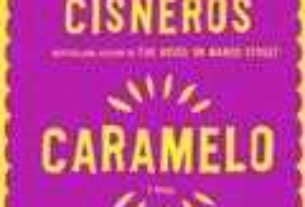I hadn’t realized how much help an escribano might be. An escribano – sometimes called evangelista – is one of those fellows who works at a typewriter under the downtown arches. And I found out some things about those arches, too.
I had a form to fill out for the Mexican government. It was long, with a lot of lines. Worse, the vertical spacing between lines wasn’t uniform and that ruled out using a computer. I couldn’t hand-print it because the instructions were to fill it out on a typewriter. I borrowed an IBM Selectric but couldn’t master it.
So I took the form to an escribano. His old manual typewriter handled the problem of line spacing, of course, but it was his knowledge of the Mexican government that saved me from making out the form again. He would ask me the questions on the form, translate my Spanish into the gobbledegook that all governments love, and so together we got the form filled out.
I hadn’t counted on the gobbledegook, nor on the polite flourishes he would sometimes insert. Left alone, I would have used words that didn’t belong or didn’t quite mean the right thing. And it’s never advisable to confuse a bureaucrat or wound his pride, whether it’s in Mexico, America or Timbuktu. When I submitted the completed document to the government they accepted it without question. The escribano was a speaker of government gobbledegook and I was not. Case closed.
I watched him a few minutes. His next client wanted him to draw up a formal rental contract. The escribano knocked it out from memory and it was a really impressive document when he finished.
I paid him his 7 pesos and thanked him. I was quietly grateful, too, that on such a rainy day there was a comfortable spot under the sheltering arches to do my business.
But it was no accident that those downtown arches were there – no, indeed! They had been ordered for me by the King of Spain!
Old photographs of Mexican cities show sets of essentially free-standing arches rather causally attached by a light roof or tarpaulin to some small building. Inside the arches were closet-like wooden structures in which small merchants – and escribanos – sold their merchandise or services.
The purpose of these sets of arches – portales, they were called – was to promote business. They were so ordained by King Philip II of Spain in his ordenanza of July 3, 1573, to all his possessions in the New World. This ordenanza loftily vaticinated, “let the plaza have sets of arches because they are of much comfort to the buyers and sellers who are accustomed to meet there.”
Something of a micro-manager, King Philip had already ordered that his cities of the New World lay out their streets in a rectilinear grid, oriented north-south.
Both these ordenanzas were super-good ideas. A street grid invites sensible traffic patterns. And where, in Mexico, will you find a town whose principal plaza doesn’t have several sets of arches surrounding it? There isn’t such a thing. The King’s idea was a good one and the people enthusiastically adopted it.
Of course, nowadays, the old style arches, free-standing and made of limestone, have given way to massive concrete arches that can be used architecturally to support many floors of offices above.
And who do we find still working under the new arches? Why, escribanos, sellers of sweets, shoeshine men, and the same gamut of people who were working there in 1573. It’s still the best retailing location in town. What a pity modern city planners haven’t inherited the genius of King Philip!
But some denizens of the old arches no longer work there, and they won’t be missed. These are the encuerados. When it became fashionable for the wealthy to display their finery by taking a paseo – a stroll – under the arches by night, they would be set upon by the encuerados – the naked ones. These men, nude, smeared with grease and powdered with soot, would grab their valuables and disappear into the blackness. Electric lighting put an end to their depredations.
At any rate, when I need an escribano I know right where to look: under the arches that King Philip had decreed for my comfort and where business would always be good.


